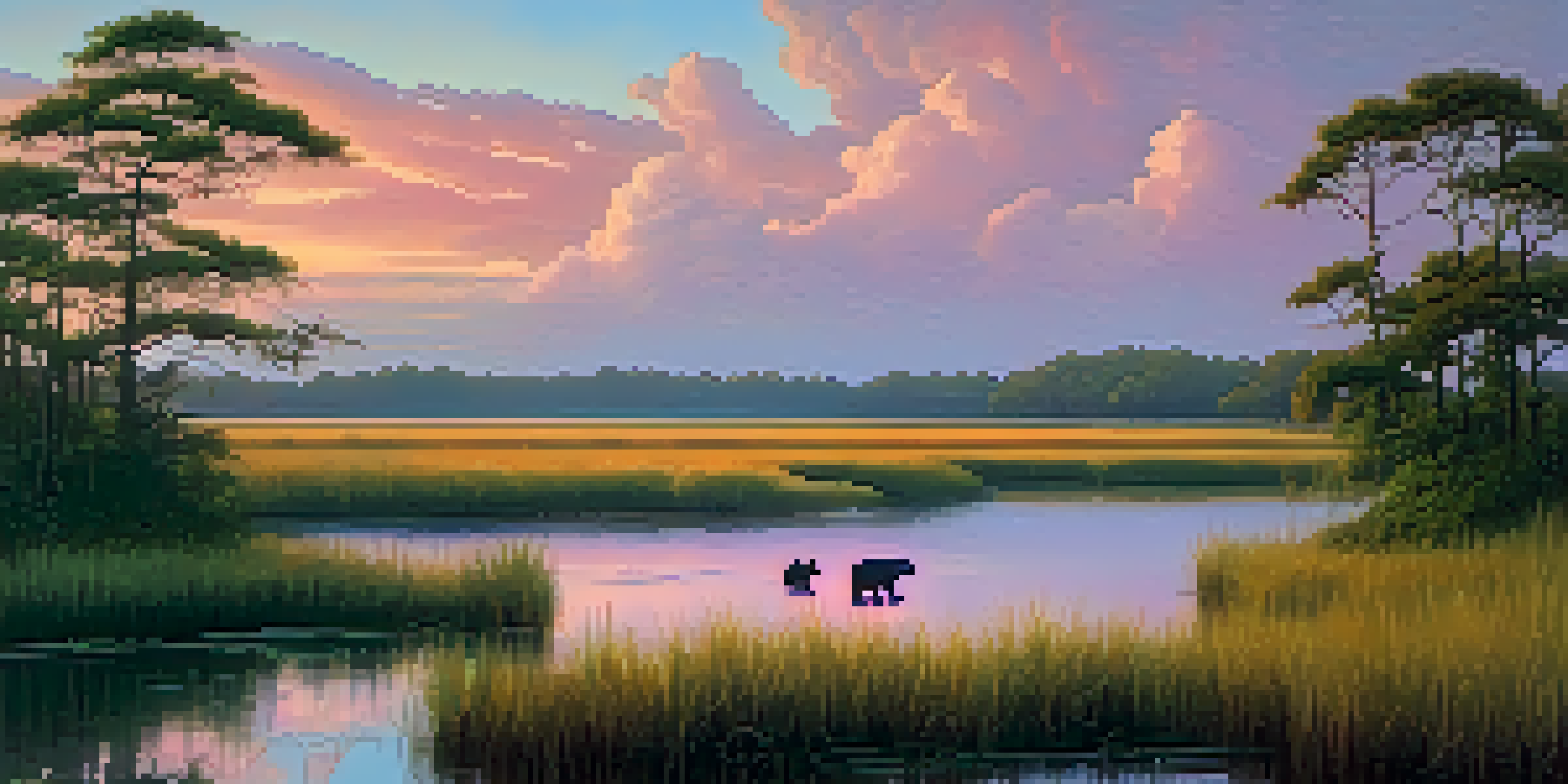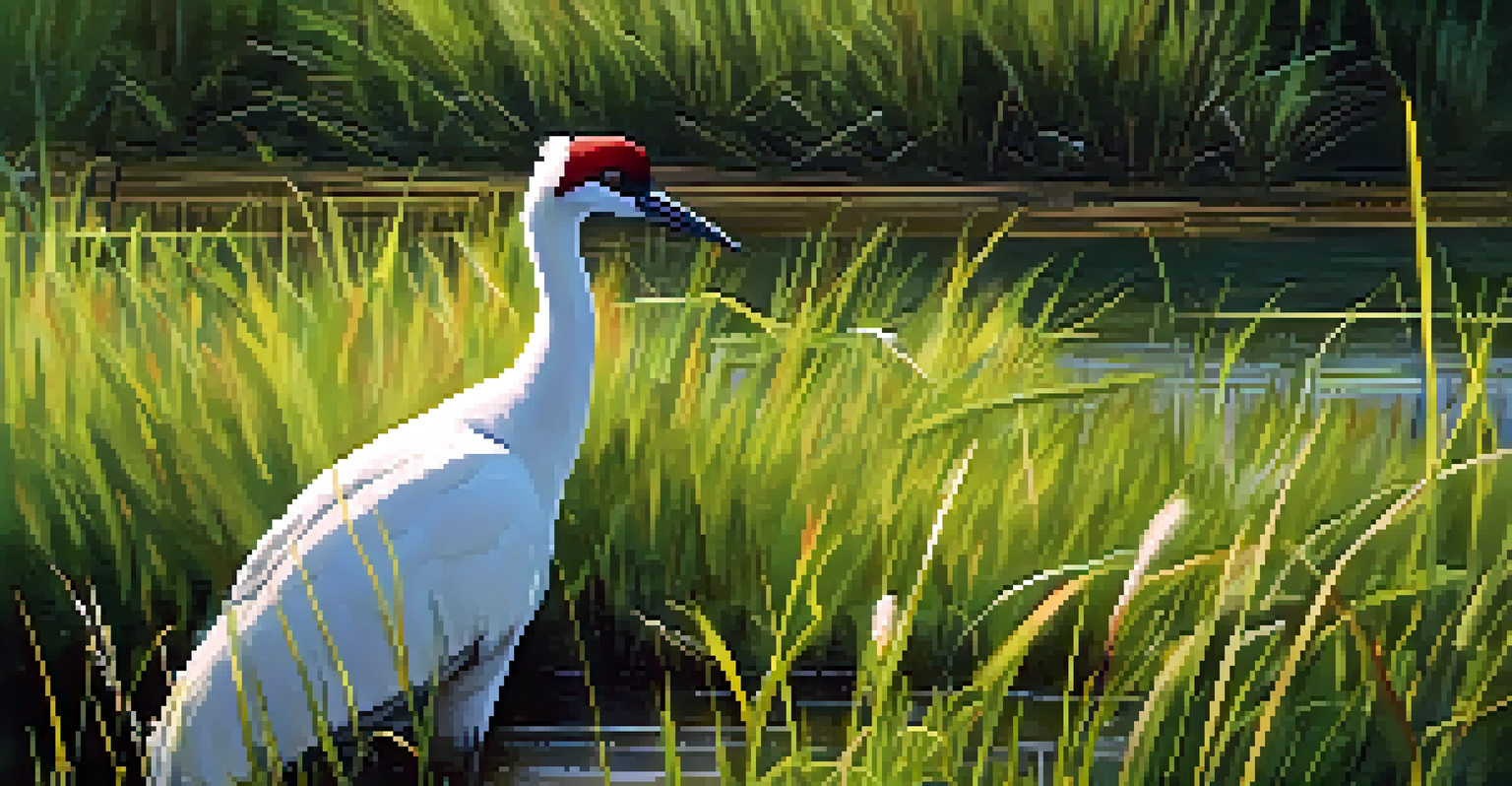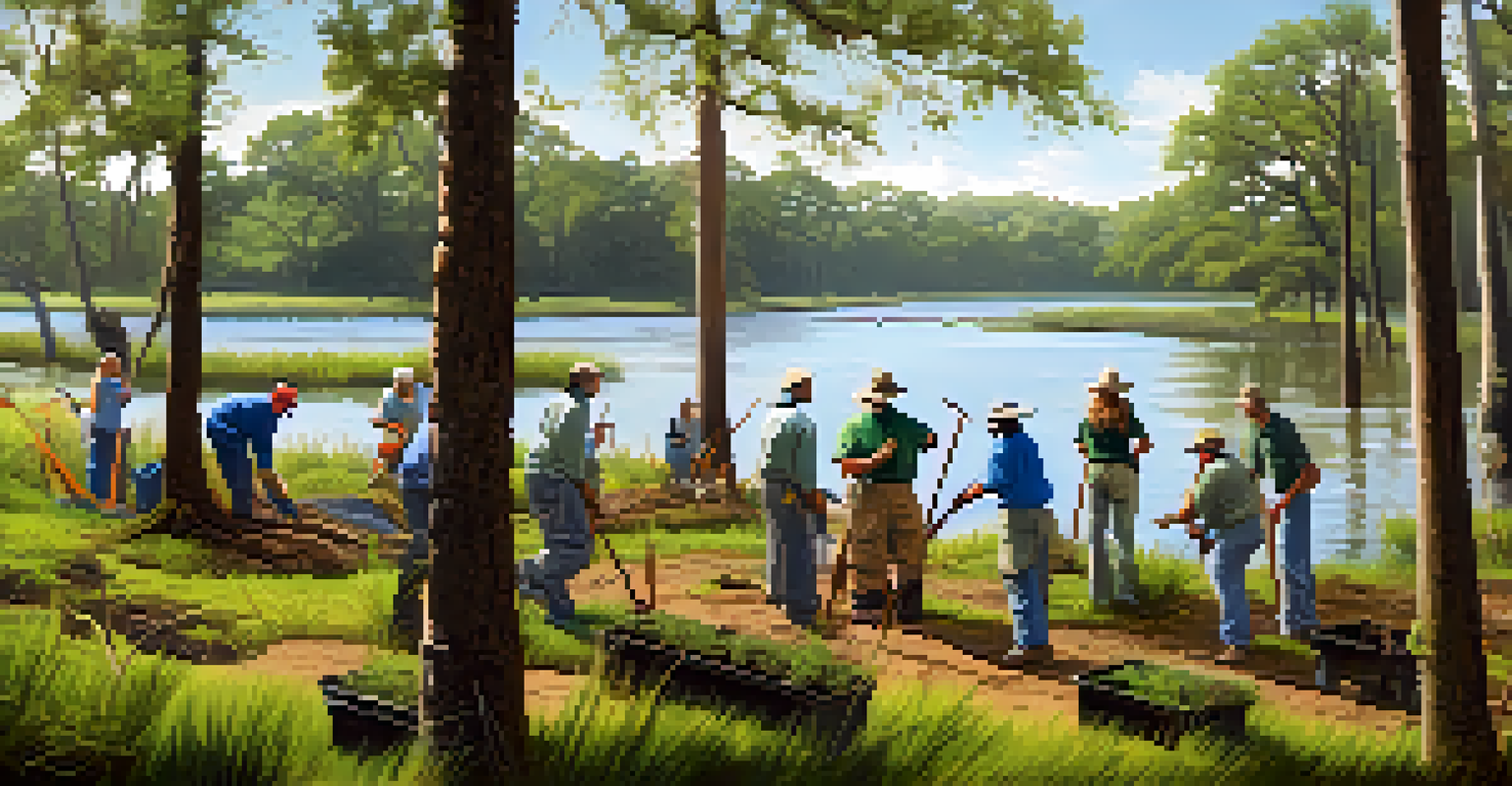Conservation Efforts for Louisiana's Unique Wildlife Species

Understanding Louisiana's Unique Biodiversity
Louisiana is home to an astonishing array of wildlife, including species found nowhere else on Earth. Its unique ecosystems, like the coastal marshes and wetlands, support a rich tapestry of life. This biodiversity is crucial not only for the health of the environment but also for the cultural heritage of the state.
What we are doing is not only for ourselves but for future generations. Nature does not need people; people need nature.
From the endangered Louisiana black bear to the vibrant roseate spoonbill, each species plays an important role in the ecosystem. These animals are not just fascinating; they contribute to the balance of nature, helping to control pests and pollinate plants. Understanding this biodiversity helps underscore the importance of conservation efforts.
Unfortunately, many of these species face significant threats from habitat loss, climate change, and pollution. As we delve into the conservation efforts aimed at preserving Louisiana's wildlife, it's clear that protecting these unique species is vital for both the environment and the people who call this state home.
The Role of State Organizations in Conservation
Various state organizations, such as the Louisiana Department of Wildlife and Fisheries, play a pivotal role in conservation efforts. They are responsible for managing wildlife resources and implementing policies to protect endangered species. Through research, habitat restoration, and public education, these organizations work tirelessly to ensure the survival of Louisiana's unique wildlife.

One notable initiative is the Louisiana Coastal Master Plan, which aims to restore and protect coastal habitats that are critical for many wildlife species. This comprehensive plan outlines strategies to combat erosion, improve water quality, and enhance habitat resilience. By investing in these projects, the state is not only protecting wildlife but also safeguarding the livelihoods of communities that depend on these ecosystems.
Louisiana's Biodiversity is Unique
The state's diverse ecosystems support countless species, many of which are found nowhere else on Earth.
Collaboration with federal agencies and non-profit organizations further amplifies these efforts. Together, they pool resources and expertise, creating a more robust framework for conservation. This united approach is essential for addressing the complex challenges facing Louisiana's wildlife.
Community Involvement in Wildlife Conservation
Community involvement is crucial for the success of conservation efforts in Louisiana. Local citizens often take on the role of stewards, participating in habitat restoration projects and wildlife monitoring programs. Their firsthand knowledge of the land can provide valuable insights into the specific needs of local wildlife.
The environment is where we all meet; where we all have a mutual interest; it is the one thing all of us share.
Organizations like the Audubon Society of Louisiana engage communities through educational programs and volunteer opportunities. These initiatives foster a sense of connection between residents and their environment, encouraging them to advocate for wildlife protection. When communities feel invested in their local ecosystems, conservation efforts become more effective.
Moreover, events like wildlife festivals and nature walks help raise awareness about the importance of protecting Louisiana's unique species. These gatherings not only educate attendees but also inspire them to take action, whether it's through advocacy or personal lifestyle changes that benefit the environment.
Impact of Climate Change on Louisiana Wildlife
Climate change poses a significant threat to Louisiana's wildlife, affecting habitats and food sources. Rising sea levels, increased temperatures, and unpredictable weather patterns disrupt the delicate balance of ecosystems. Species that rely on specific conditions may find it challenging to survive as their habitats change or disappear.
For instance, coastal wetlands that serve as breeding grounds for many bird species are increasingly at risk due to erosion and saltwater intrusion. This loss not only impacts wildlife but also reduces natural protection against storms, putting communities at greater risk. Understanding these challenges is essential for developing effective conservation strategies.
Community Engagement is Key
Local involvement in conservation efforts fosters a deeper connection to the environment and enhances the effectiveness of wildlife protection initiatives.
To combat these issues, conservationists are focusing on habitat restoration and resilience-building efforts. By restoring wetlands and improving coastal defenses, they aim to create environments that can better withstand the impacts of climate change. These proactive measures are vital for safeguarding Louisiana's unique wildlife and ensuring their survival for future generations.
Success Stories in Louisiana Wildlife Conservation
Louisiana has seen several success stories in wildlife conservation that highlight the positive impact of dedicated efforts. One such success is the recovery of the Louisiana black bear, which was removed from the endangered species list in 2016 due to extensive conservation initiatives. This achievement underscores the importance of habitat protection and community engagement in conservation.
Another notable success is the restoration of the whooping crane population through captive breeding and reintroduction programs. Once on the brink of extinction, these magnificent birds now have a growing population in Louisiana, thanks to the collaborative efforts of state agencies and wildlife organizations. Their return to the wild is a testament to what can be accomplished through concerted conservation efforts.
These success stories serve as inspiration for ongoing and future conservation projects. They demonstrate that with the right strategies, resources, and community support, it's possible to make a significant difference in preserving Louisiana's unique wildlife.
Challenges Facing Conservation Efforts
Despite the many successes, conservation efforts in Louisiana face significant challenges. Funding limitations can hinder extensive projects, making it difficult to implement long-term solutions. Additionally, competing interests, such as industrial development and agriculture, can put pressure on fragile ecosystems.
Public awareness and education also play a critical role in overcoming these challenges. Many people may not fully understand the importance of conserving wildlife, which can lead to apathy or opposition to conservation initiatives. Raising awareness about the value of biodiversity and the threats faced by wildlife is essential for garnering support.
Climate Change Threatens Wildlife
Rising sea levels and changing weather patterns disrupt habitats, putting Louisiana's unique species at risk.
Furthermore, the effects of climate change are constantly evolving, presenting new obstacles for conservationists. As they work to adapt strategies to these changes, collaboration among organizations, policymakers, and communities becomes increasingly crucial. Together, they can navigate the complexities of conservation in a changing world.
How You Can Help Louisiana's Wildlife
Every individual can play a role in supporting conservation efforts for Louisiana's wildlife. Simple actions, like reducing plastic use, conserving water, and supporting local conservation organizations, can make a significant difference. By being mindful of our environmental impact, we contribute to the health of ecosystems that support wildlife.
Volunteering for local wildlife organizations or participating in clean-up events can also provide hands-on support. These activities not only benefit wildlife but also foster a deeper connection to nature. Engaging with your community in conservation efforts creates a ripple effect, encouraging others to get involved.

Lastly, advocating for policies that protect wildlife and their habitats is vital. Staying informed about local conservation issues and speaking up for the environment can influence decision-makers. Together, we can ensure that Louisiana's unique wildlife continues to thrive for generations to come.